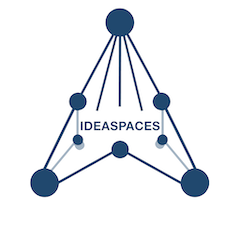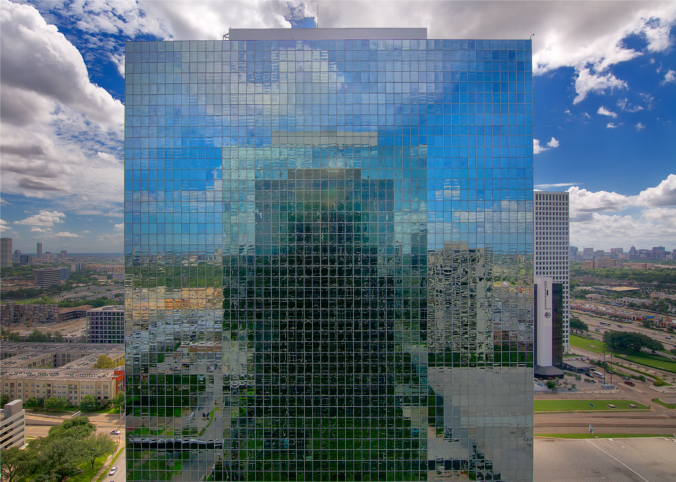Digital technology introduced me to the idea that the world is an inherently constructed artifact. When I was a freshman in high school, my father gave me a blank slate called an Apple ][+. Over the next few years, I kept discovering new things that I could construct with it. When I got to graduate school a decade later, I discovered the work of postmodernist thinkers who were advancing the theory that language, stories, and structures of power construct our realities. These ideas, particularly the constructivist ones, resonated with me, because I recognized in them the same possibilities that I saw with my first computer.
If you can construct a world, you can also deconstruct the one that exists. There are no immutable laws, only human constructions. We can build our worlds anew.
Digital technology augments our ability to understand and redefine reality. By starting with basic ideas of what we are trying to accomplish, we can construct new technologies and systems to achieve those goals. We can work backwards (sideways?) from Foucault to Woz. The needs of the user should always define the shape of the constructed technology. This is the uniting philosophy of my work from IdeaSpaces to the ShapingEDU team’s work with the Teaching Toolset Project.
In postmodernist analysis, language creates and enforces power. How we define something constructs how we use it. Websters defines technology as ”a manner of accomplishing a task especially using technical processes, methods, or knowledge.” Douglas Engelbart’s conception of technology expands on this definition:
The conceptual framework we seek must orient us toward the real possibilities and problems associated with using modern technology to give direct aid to an individual in comprehending complex situations, isolating the significant factors, and solving problems.
If we start with the concept that technology is supposed to “solve problems”, we need to look much further than what we would typically refer to as “gadgets.” On one level, everything was high tech once, including the mundane like clothes, pencils, paper, walls, etc. Therefore, we need to think backwards and forwards as we consider technological solutions. On another level, human organizations, from governments to educational systems to corporations, are also technologies.
Adding human organizations runs against Don Ihde’s definition, which rejects “technology equivalent to any calculative or rational technique.” (P. 47, emphasis in original). Distinguishing technique from technology has a rational purpose because it separates the physical manifestation of technology from the mental manifestation of the task. The problem occurs when we become fascinated with the physical manifestations of technologies and overlook the mental aspects of what we use technology for. As a result, we are often frustrated in our tasks by the very technologies we create to fulfill them.
This central conundrum is the starting point of my new book, Discovering Digital Humanity, where I argue that our fascination with creating more and more technologies has overwhelmed our capacity to focus on tasks and to “augment” ourselves. If you want to drive a nail, it’s probably better to employ a hammer than a screwdriver. With mundane technologies, this seems obvious.
However, consider all the technological options we suddenly have for the task of expressing our ideas: pencils, word processors, concept mapping tools, blogging software, and that’s just the tip of the iceberg. Now take this up a level of abstraction and consider the integration of idea expression into the task of teaching someone else how to incorporate, modify, create, express, and share their own ideas and the complexity of the task of teaching becomes clear.
We need systems of technologies to approach teaching. We should also consider these systems technologies whose purpose is rationalizing and scaling the other technologies. They are ineffective in isolation from one another but share the goals of the original technologies employed.
Let us consider yet another definition of the concept of technology, that of German philosopher Martin Heidegger “as an ordering of the world to make it available as a “standing reserve” poised for problem solving and, therefore, as the means to an end. This challenging of man to order the world and in so doing to reveal its essence is called enframing” (Bijker, Hughes, Pinch, 2012, pp. 47-48).
Heidegger’s definition encompasses both physical and mental constructions of technology. Otherwise it’s impossible to “order the world.” Gadgets don’t order the world. Human structures do. Those structures fail because limited conceptions of technology limit our ability to assess how our systems fail. We like to point our fingers at broken technologies without considering the broken contexts in which they exist. We blame the tool and refuse to look in the mirror at our own failings. Technology failures almost always begin and end with humans.
Systems define relationships. Church and state define marriage, a human relationship. The “rules” of a profession often frames our relationship with technology. Frameworks shape how we express ideas. Environments shape our capacities to use technologies and technologies shape the environment that contains them. These are all systemic relationships.
Too many of our systems, from marketing to “best practices,” drive us toward thinking about technology as a thing that must be treated in isolation. This is one of the mental barriers we have had to confront with the Toolset Project. Most work in this arena takes place within systems of humans whose primary interest is the technology itself. Most of the participants in the brainstorming sessions were technologists conditioned to seeing technology as an end, not a means.
The technologist mindset is not typical of the world at large. The vast majority of humans have been taught to accept technologies and systems that compromise their goals. This is not some vast plot, but flows from this separation between physically and mentally constructed worlds. At the college level, we no longer teach people how to write in the technical sense of the word. We teach people how to express ideas and how to think about ideas. Writing is closely associated with a range of technologies and thinking closely associated with writing, but there’s an element of separation between thinking and technologies that we constantly struggle with, both as teachers and thinkers.
If we are going to create human-centered technologies and systems, we must acknowledge the centrality of the human-constructed paradigms in all our decisions. Constructing good paradigms and understanding bad ones is critical to our ability to achieve any significant goal.
All three levels of the IdeaSpaces framework are constructed paradigms. Space encompasses what most people think of when they think of technology. However, it goes much further than technical objects and includes everything that we might build into a physical or virtual environment. Time, as we understand it, is a human construct. We define the workday, the class period, and even when the sun comes up and down through our constructs of time. Structures are human constructions that establish frameworks, but they are also paradigms themselves. Therefore, just like any other technology, we can alter and adapt them to suit the needs of those who work within them.
There are many who might find this constructed world disconcerting. Digital technology creates a postmodernist technology environment. We are no longer constrained by massive built environments in the same way as we were during the height of the industrial era. We are no longer part of the machine, no longer subject to the factory clock, and therefore should not structure human organizations around these increasingly anachronistic realities.
Now is the time to drill deeply into what we need to accomplish as human beings, societies, and organizations and build up from there. There is nothing stopping us from imagining the shape of new worlds with the vast array of technology suddenly available to us. Being a part of constructing new worlds is why I love working with all the teams of creative minds exploring this terrain at ShapingEDU.

